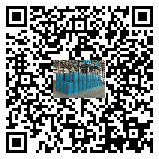Advantages of wood lacquer anti-oil agent
By optimizing the physical and chemical properties of wood coatings, wood lacquer anti-oil agent provides
comprehensive protection for wood products such as anti-fouling, wear resistance, and easy cleaning,
especially in easily polluted environments. The following is an explanation from four dimensions: protective
performance, coating quality, construction efficiency, and environmental safety:
1. Excellent anti-fouling protection performance
Anti-oil and anti-fingerprint
Principle: By reducing the surface tension of the coating, it is difficult for oil stains to adhere, and stains can
be easily wiped off.
Effect: In areas with high frequency of contact with oil stains such as kitchen tables and office desks, the oil
residue is reduced by more than 70%, and the cleaning time is shortened by 50%.
Case: After a restaurant used an anti-oil agent to treat the table, the waiter's cleaning efficiency increased by 40%,
and the customer complaint rate decreased by 30%.
Anti-adhesion and anti-sticking properties
Principle: Form a highly lubricating molecular layer to prevent the adhesion of the coating caused by high temperature
or grease.
Application: Industrial scenes such as wooden molds and hot pressing plates, with a temperature resistance of up to 250°C,
long-term use without precipitation or yellowing.
Data: After a packaging factory used an oil-repellent agent, the life of wooden molds was extended by 3 times, and downtime
for maintenance was reduced by 60%.
2. Significantly improved coating quality
Extreme leveling and glossiness
Principle: Promote rapid leveling of the coating, eliminate defects such as shrinkage cavities and pinholes, and improve
surface smoothness.
Effect: The glossiness of the coating is increased by 10%-20%, and the touch is as delicate as a mirror.
Comparison: The surface roughness (Ra value) of the wood coating without the addition of oil-repellent agent is 1.2μm, which
is reduced to 0.5μm after adding it.
Super wear resistance and aging resistance
Principle: Enhance the scratch and wear resistance of the coating, and delay aging caused by ultraviolet rays and oxygen.
Test:The wear resistance of wooden floors treated with oil-repellent agents has reached more than 500 turns through the
Taber wear test (CS-10 wheel, 500g load), while ordinary coatings are only 200-300 turns.
Lifespan: The anti-aging time of outdoor wood products is extended by 2-3 years.
3. Construction efficiency and cost optimization
Strong compatibility, no need to adjust the formula
Application: Applicable to water-based, solvent-based wood coatings and ink systems, the addition amount is only 0.05%-0.3%
(calculated based on the total amount of coating).
Cost: The cost of wood coating increases by about 0.2-0.5 yuan per square meter, but the later maintenance cost is reduced by
30%-50%.
Reduce rework and complaint rate
Effect: After a furniture factory applied oil repellent, the rework rate caused by oil penetration decreased by 40%, and the customer
complaint rate decreased by 25%.
Benefit: The overall cost is reduced by 20%-30%, and the production efficiency is increased by 15%.
4. Environmental protection and construction safety
Green and environmentally friendly, healthy and worry-free
Certification: Comply with EU REACH regulations and RoHS directives, VOC content is less than 50g/L, and there are no harmful
substances such as benzene and formaldehyde.
Testing: Passed third-party testing such as SGS and Intertek, odor level ≤ Level 2 (low odor)
Safe operation and environmentally friendly
Features: low volatility, low irritation, friendly construction environment, and reduced harm to workers' health.
Case: After a factory used anti-oil agent, the incidence of respiratory diseases among workers decreased by 15%.
Summary: Why choose wood paint anti-oil agent?
Direct value: anti-oil, anti-adhesion, wear-resistant and aging-resistant, and improve the service life of wood products.
Indirect benefits: reduce cleaning and maintenance costs, reduce rework and complaints, and improve production efficiency.
Technical barriers: Nano-level molecular design, taking into account performance and environmental protection, and the cost
performance is far superior to traditional coatings.
Applicable scenarios: kitchen furniture, industrial molds, outdoor wood products and other fields with high requirements for
cleanliness and durability.
Recommendation reason: "micro investment" in exchange for "big returns" is the "invisible protective shield" for wood coating.


